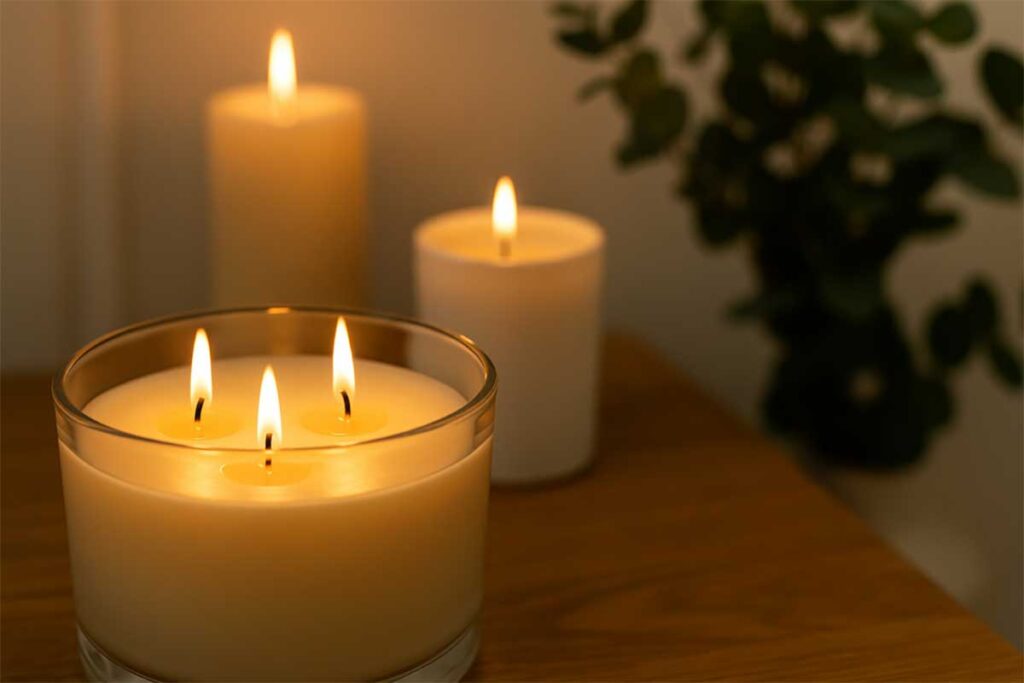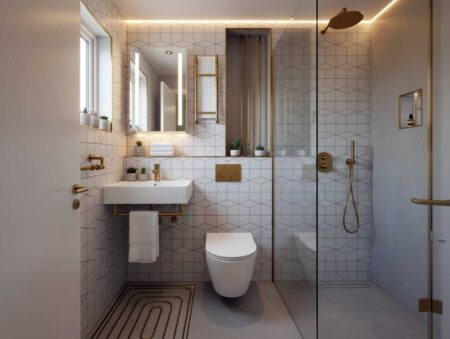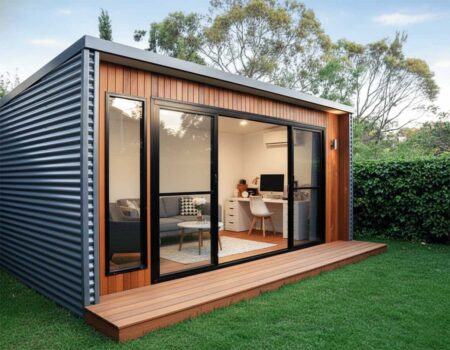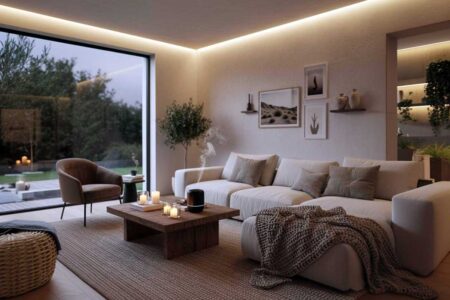Home décor trends often shift with cultural influences, evolving lifestyles, and consumer priorities. In recent years, one of the most notable movements in interior design has been the renewed focus on atmosphere and sensory experience within the home. This shift has put scented candles and the appeal of a 3 wick candle sale at the forefront of conversations about both affordable luxury and everyday comfort. More than just functional items for light or fragrance, candles have become lifestyle staples that reflect taste, personality, and even wellness preferences.
Understanding why they hold such influence requires a closer look at the elements that drive their popularity, including design, function, cost, sustainability, and emotional connection. Each factor comes with its own trade-offs, making it important for homeowners and consumers to weigh the benefits and challenges of different approaches before deciding how to incorporate candles into their living spaces.
The Rise of Candle Culture in Home Décor
Candles have long been part of rituals, celebrations, and traditions. In modern décor, however, their role has expanded far beyond occasional use. They are now prominent as decorative accents and personal style markers. The growth of social media platforms like Instagram and Pinterest has amplified this trend, with staged images of glowing jars on coffee tables or styled trays helping candles become aspirational objects in home styling.
What makes this evolution interesting is the intersection of aesthetics and practicality. Unlike purely ornamental décor, candles serve a dual purpose. They add visual charm and also provide fragrance that can shift the entire mood of a space. This multifunctionality is one reason their demand has surged across all demographics, from students furnishing dorm rooms to professionals investing in high-end interior styling.
Why Three Wick Candle Designs Dominate
The introduction of the three wick candles changed how consumers viewed candles as part of home décor. Unlike a single-wick option, a triple wick candle distributes fragrance more evenly and offers a stronger throw across larger spaces. It also burns more brightly, producing a layered light effect that contributes to ambiance.
From a design standpoint, three wick versions are usually housed in wider vessels, which makes them a more noticeable centerpiece in a room. Their size and burn pattern give them a presence that smaller candles cannot achieve. However, this benefit comes with trade-offs. They are often more expensive than single-wick varieties, and they may consume wax faster, requiring more frequent repurchase. This balance between impact and longevity is a key consideration for buyers deciding whether to invest in larger candles versus smaller, longer-lasting ones.
Scent as a Design Element
One of the most distinctive characteristics of modern décor trends is the elevation of fragrance as a design element. Just as color palettes or textures define a room’s personality, so too does scent. Scent candles can transport individuals, evoke memories, or create a specific atmosphere. For example, lavender notes might be chosen for a calming bedroom, while citrus blends may feel more fitting in a bright, modern kitchen.
The challenge lies in the subjectivity of fragrance. What feels soothing to one person may be overwhelming to another. Strongly aromatic candles can dominate small spaces and lead to discomfort if not carefully balanced. As a result, homeowners are learning to match fragrance intensity with room size, airflow, and even the activities planned in the space.
Aromatic Candles and Emotional Well-Being
Another factor driving candle popularity is the connection between fragrance and wellness. Research in aromatherapy suggests certain scents may influence mood, reduce stress, or encourage relaxation. While candles are not medical solutions, their ability to complement self-care routines has made them staples in homes prioritizing wellness.
Still, there are trade-offs in this approach. Strongly perfumed candles can cause headaches or allergic reactions for sensitive individuals. Synthetic fragrances may not suit everyone, while natural essential oils are sometimes less potent in scent throw. This creates a challenge for both manufacturers and buyers: how to achieve balance between potency, safety, and wellness benefits without compromising on sensory appeal.
Seasonal Trends and Limited Editions
One of the most effective marketing strategies for candle companies has been the introduction of seasonal collections. Pumpkin spice in autumn, pine and cinnamon in winter, or tropical fruits in summer allow homeowners to align their décor with the changing seasons. This mirrors fashion cycles and provides fresh inspiration throughout the year.
The advantage of this approach is variety and excitement, but it also creates pressure for consumers. Collecting limited editions can lead to overspending or clutter. For minimalists, rotating through too many fragrances may conflict with their desire for a streamlined lifestyle. Thus, while seasonal options are enticing, they require thoughtful purchasing habits to ensure they truly add value to a home rather than contributing to impulse buying.
The Role of Aesthetic Packaging
Candles are no longer just about scent or light; their jars, lids, and labels have become part of décor styling. Many brands invest heavily in design elements that allow their products to double as decorative accents. Matte finishes, frosted glass, metallic details, and minimalist typography all reflect broader design trends in interiors.
This packaging focus helps candles transition seamlessly into living spaces, often replacing or complementing traditional decorative objects like vases or photo frames. However, the emphasis on design introduces sustainability challenges. Heavy glass jars or elaborate packaging may enhance aesthetic value but increase environmental footprint if not recyclable or reusable. As consumers become more eco-aware, they face the trade-off between choosing products for their visual appeal versus their environmental responsibility.
Triple Wick Candle vs. Smaller Options
When evaluating candle choices, consumers often weigh the benefits of a triple wick candle against single-wick or even tealight options. Larger multi-wick styles provide greater impact, but they also burn faster and are less portable. Smaller candles, on the other hand, can be placed throughout a home for subtle fragrance layering.
The decision comes down to individual priorities: a statement centerpiece versus distributed accents. Both approaches have value, and many households choose to use a combination. The triple wick candle serves as a focal point in living rooms or dining areas, while smaller options fit bedrooms, bathrooms, or entryways. Recognizing this flexibility allows buyers to tailor their candle use to different moods and spaces without committing to a single style.
The Impact of Price and Accessibility
Another reason candles are at the center of home décor is their accessibility. Unlike furniture or art pieces, they provide a relatively affordable way to refresh a room. For many, the opportunity to shop during a 3 wick candle sale makes premium options more attainable.
Price sensitivity plays a significant role here. While luxury candle brands can cost upwards of $50 per jar, mass-market alternatives offer similar aesthetic and aromatic benefits for a fraction of the price. Yet, lower prices often come with compromises, such as less refined fragrance profiles, shorter burn times, or materials that are not as clean-burning. Consumers must evaluate what matters most to them, value, safety, or sensory experience, when navigating the spectrum of options.
Sustainability and Ethical Considerations
Modern décor trends increasingly emphasize sustainability, and the candle industry is not exempt from this scrutiny. Issues like sourcing of wax, type of wick, and environmental impact of packaging influence purchasing decisions. Soy blends, coconut wax, or beeswax are considered cleaner alternatives to paraffin, though they can be more expensive.
Here, the trade-offs are clear. Eco-friendly options often command higher prices, which can limit accessibility for some buyers. At the same time, they align better with long-term consumer values around wellness and sustainability. Ethical manufacturing practices, including fair wages and local production, add another dimension of consideration for socially conscious buyers.
Challenges in Balancing Fragrance Strength and Safety
One of the recurring challenges in candle production and use is the balance between strong scent throw and indoor air quality. Candles with stronger fragrances may feel more satisfying but can release higher levels of volatile organic compounds (VOCs) depending on the ingredients used. Clean-burning options mitigate some of these risks but may deliver a lighter scent.
Consumers navigating this challenge need to pay attention to both product descriptions and their own experiences. Testing smaller sizes before committing to larger jars can prevent disappointment. Meanwhile, manufacturers face the challenge of transparency and trust, clearly communicating ingredients and safety standards without overwhelming buyers with technical jargon.
How Candles Shape Lifestyle and Identity
Beyond function and décor, candles have become lifestyle markers. The choice of fragrance or vessel design often reflects identity. Minimalists may prefer clean, white jars with subtle scents, while maximalists may choose bold packaging and rich, complex fragrances. Sharing candle setups on social media has turned them into personal branding elements, showcasing not only taste in décor but also lifestyle values.
The cultural resonance of candles also intersects with self-care, mindfulness, and relaxation practices. Lighting an aromatic candle at the end of the day signals transition from work to rest, blending décor trends with mental health routines. This dual role reinforces their central position in modern homes.
Looking Ahead: Future of Candle Trends
As with all lifestyle trends, candle popularity will continue to evolve. Some emerging directions include:
- Hybrid products: candles that also act as massage oils once melted.
- Refillable jars: addressing sustainability concerns with reusable containers.
- Personalized scents: allowing buyers to choose fragrance blends tailored to preferences.
- Tech-integrated designs: combining traditional wax with digital elements like timers or fragrance release controls.
Each innovation brings opportunities but also challenges. Refillable models may reduce waste but require consistent logistics. Personalized scents can increase satisfaction but raise production costs. Consumers and brands will need to weigh these trade-offs carefully as the industry adapts to shifting demands.
Wrapping Up
The prominence of scented candles and the popularity of events like a 3 wick candle sale highlight a broader movement in home décor: the prioritization of atmosphere, sensory experience, and personal identity. Candles serve as accessible luxuries, versatile decorative elements, and emotional touchstones. Their rise reflects a convergence of affordability, wellness, and style, though buyers must navigate trade-offs in cost, sustainability, fragrance intensity, and safety.
For today’s homeowners and design enthusiasts, candles are more than small accessories; they are statements that combine practical benefits with emotional resonance. Whether choosing a triple wick centerpiece for the living room or layering subtle aromatic candles throughout the home, these products now occupy a central role in shaping environments that feel warm, personal, and inviting.






